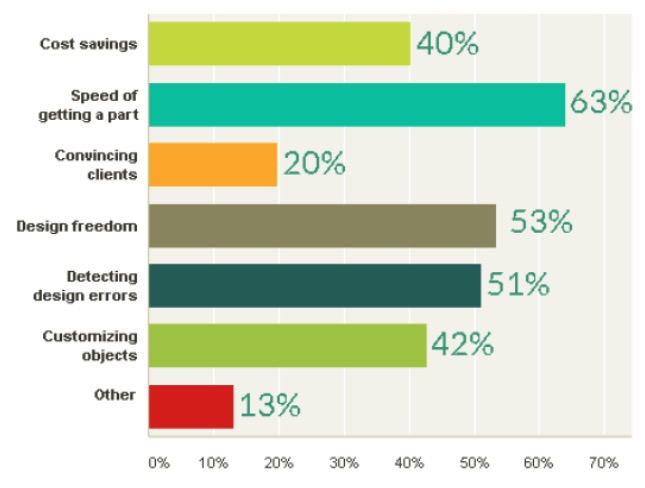
A report from Leapfrog 3D Printers examines the benefits seen by engineers using personal 3D printers.
Recently there has been a shift in focus by some 3D printer manufacturers from the general consumer market to more professional users. One professional user type is engineers. But why would an engineer need or want a 3D printer?
A survey performed by Leapfrog 3D Printers may reveal the answer. In the image above, you’ll see which factors are seen to be most important. Let’s take a look at each.
These factors must be judged as comparing use of a nearby desktop 3D printer to a more distant 3D print service, large shared corporate 3D printer or traditional prototyping methods.
Cost Savings. The cost savings are typically due to the cheap cost of plastic used in personal 3D printers versus expensive proprietary plastic in 3D print services or, even worse, the cost of milling parts using traditional equipment.
Speed of Getting a Part. When the machine making your prototype is sitting on your desk, the speed is obvious and in this survey, the speed was the most important factor. Even prints taking hours likely are completed far faster than other techniques.
Convincing Clients. This factor is rated low in the survey, simply because if you’ve made the prototype, regardless of method, you’re still demonstrating it to the client in much the same way.
Design Freedom. Design freedom likely derives from the ability of 3D printers to produce objects with arbitrary geometry, whereas traditional prototyping methods have various restrictions.
Detecting Design Errors. We believe this is related to speed, as delivery of completed prototypes faster means you can detect – and resolve – design errors faster. More errors can be detected and corrected in a given time.
Customizing Objects. Again, speed is the key. If you can receive prints faster, you can make more customizations in a given time. Also, 3D modeling techniques provide an easy way to quickly adapt an existing model without much concern for the effect on prototype build.
For these reasons we see a very large and growing market for desktop 3D printers in engineer’s offices.

